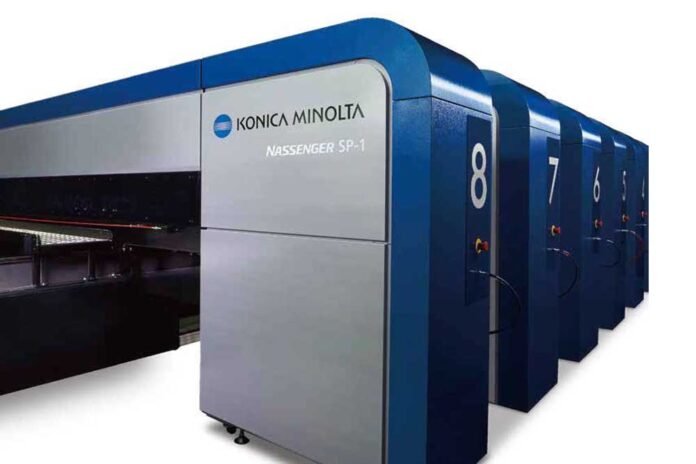Manufacturer of apparel, fashion, and décor fabrics, faced with ballooning energy consumption and water charges, are helping to drive increased demand for digital textile printing. It has an evolving pattern. The textile printing industry has evolved significantly over the years. Some experts estimate that digital fabric printing can lower energy use by as much as 30% and water use by up to 90%. Konica Minolta will present its state-of-the-art digital textile printing machinery at ITMA ASIA + CITME 2025 in Singapore, at Hall H6, Stand D302.
According to Gianluca Macchi, Sales Director, Konica Minolta, “Konica Minolta is a renowned multinational global company with a legacy spanning over 150 years, establishing itself as a leader in diverse industries. One of the company’s most distinguished business units is its textile printing division, where Konica Minolta stands out from its competitors. What sets us apart is our unwavering commitment to quality and reliability, two key pillars that have earned us a trusted reputation in the textile industry. Our single-pass technology is a core differentiator, ensuring exceptional performance and efficiency in printing.

”He added, “A standout feature of our machines is the automatic nozzle compensation system, which is patented and integrated into the printer to enhance precision and consistency. Moreover, Konica Minolta’s advanced inks, including reactive, disperse, and pigment inks, are specifically designed to work seamlessly with our single-pass machines. These innovative ink solutions ensure vibrant color reproduction and high durability, offering unparalleled results across a range of fabrics.”
Minimal downtime, advanced automation, and missing nozzle detection/compensation – two of the many benefits of textile printing with Konica Minolta’s high-end systems.Key design features include market-leading reliability and colour yield, as well as high safety and environmental standards that drastically reduce the environmental impacts of traditional textile printers. In addition, Konica Minolta’s REACTIVE dye meets GOTS (Global Organic Textile Standard) certification requirements.Konica Minolta first introduced its new inkjet printing digital textile machines at the ITMA exhibition in 2015. Two are scan-type high- and medium-speed textile systems, NASSENGER 10, NASSENGER 8. They meet a variety of medium-volume printing needs, ranging from sample printing to low-volume printing. Both systems have various printing modes ranging from high productivity to high image quality through to high density / high colour penetration mode. They are equipped with inkjet printheads that are also used in Konica Minolta’s flagship inkjet textile single-pass digital printer, the NASSENGER SP-1.
The NASSENGER models were launched in response to the increasing use of digital on-demand printing for textiles, where reducing downtime between jobs is critical. Another factor was greater environmental awareness to reduce effluent and the use of fuels.
Konica Minolta Selected as an Asia-Pacific Climate Leader 2025
Konica Minolta, Inc. (Konica Minolta) was selected as one of the top 350 excellent companies that contributed to reducing greenhouse gas emissions in the Asia-Pacific Climate Leaders 2025, a survey jointly conducted by the Financial Times of the UK and Statista of Germany.
Asia-Pacific Climate Leaders is a list of companies that are contributing to reducing greenhouse gas emissions in the Asia-Pacific region. This fiscal year is the fourth survey. In this survey, evaluations are made by factoring in transparency of Scope 3 and indexes, including the CDP score and SBT initiative, based on the reduction in greenhouse gas emissions relative to revenue from 2018 to 2023.
Konica Minolta has been working on initiatives to attain net zero CO2 emissions (zero CO2 emissions throughout the product life cycle) by FY2050. This selection as a leader reflects the high evaluation of such initiatives.
Konica Minolta’s response to climate change
Konica Minolta’s CO2 emissions in the product life cycle are reduced by 61% from the FY2005 level. Further, the company contributes to reducing the CO2 emissions of its customers and the suppliers around the globe. Konica Minolta will enhance its core technologies, which have been refined by respective businesses, through the use of AI and by combining technologies across business domains, helping to further reduce energy consumption and CO2 emissions by transforming the workflow and supply chain, and creating businesses to are a company needed by society.Konica Minolta remains committed to tackling climate change by properly attaining greenhouse gas emission reduction targets.



